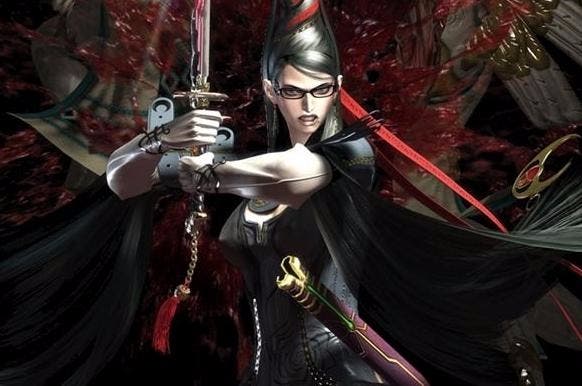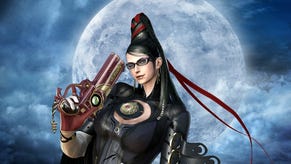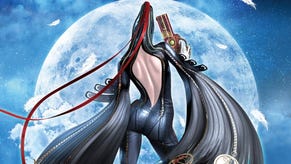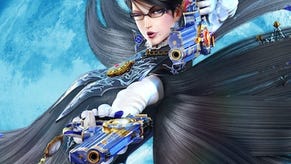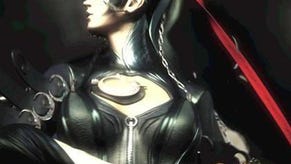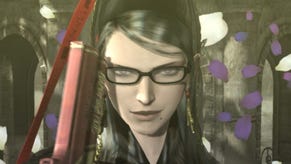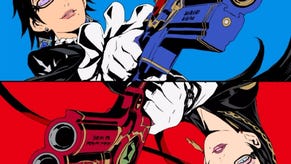Why Bayonetta is still the brawler to beat
So close.
Ōkami, painterly and poised, was a fairy-tale told with elegance and style. You played as a wolf god but this was a game rooted, not in the mystical, but in the pastoral. Wave a celestial paintbrush and you could revive wilted plants, raise vines, and even summon the sun. Such magic was localised, alas: shortly after Ōkami's release, Capcom shuttered the game's developer Clover Studio. A few weeks later its director, Hideki Kamiya, struck out on his own, co-founding Platinum Games (initially known as Seeds). It took three years to build, but when Bayonetta emerged in 2009, it showed Kamiya in a very different mood. Furious, playful, lascivious and grand, the game's Sarah Palin-esque star wore slick leathers, thick-rimmed frames and a demon-possessed hairdo. Yes, this was break-up game development writ large. Here was a boisterous counterpoint to Ōkami's tender refinements, a screaming f**k-you to constraints of genre, of style and even physics.

Bayonetta, a witch in weaponised heels (a pistol is strapped to each stiletto) streaks across the screen like a jutting spinning top. Attacks are strung together like notes on a stave, each combination resulting in a different piece of flamboyant footwork. You can leave the phrasing to chance or muscle memory; the key is that you look out for the tell-tale glint of an incoming enemy attack (accompanied by a warning 'ting'). Tap the evade button and Bayonetta will cartwheel out of the way. Leave the evasion to the last moment and the world around you turns purple. Time slows, but the witch is unaffected. She continues her attacks in real-time. In this way, defensive moves become the set-up for still grander offensives, and even the most modest of encounters becomes an opportunity for rapturous showboating.
There are shades of Kamiya's earlier work here, most obviously Devil May Cry, a game which shares a talent for player-directed virtuosity (in both games combos can be maintained with pitter-patter bullet shots that link the fisticuffs). Both games also share a camp, gothic aesthetic. But Bayonetta is a more streamlined beast, the dead weight all but stripped away. Its barmy cutscenes can be skipped, leaving just a string of delicious battles with a set of ingredients that can be mixed however you choose. The emphasis, as you might expect from a battle system so flexible, so refined, is on performance; each set-piece scuffle is carefully monitored and scored (the Pure Platinum medal is reserved for a skirmish in which you take no damage whatsoever).

Bayonetta in her secretary-cum-sex-worker attire reflects the broader character of a game that discards the dark, dry anime tone of Kamiya's earlier work for something more irreverent. The presentation teeters between whimsically exaggerated femininity (Bayonetta bleeds rose petals and, when executing a double jump, she momentarily sprouts exquisite butterfly wings) and icky objectification, particularly when it comes to those clinging, horny cutscene shots. The character was designed by a woman, Mari Shimazaki, who wanted to capture the vintage splendour of 1960s American models, but nevertheless, Kamiya has admitted that Bayonetta is something of a male fantasy, his "ideal woman". One of Bayonetta's best known and most controversial moves involves her clothes slithering up her body. To a point the characterisation counterbalances the sexist overtones: Bayonetta, whichever way you look at her, is a strong, inspiring lead.
With its cutaway stylization and hammy voice acting, her story is ludicrous and often illegible. But what the approach lacks in sense it gains in sensation. One of the game's earliest and most memorable fights takes place in an abandoned graveyard: Bayonetta spars with angels, accompanied by a lounge version of "Fly Me To the Moon", while her Joe Pesci-esque friend crouches quivering behind a gravestone. Later, you might pick up a trumpet that fires shot like a Victorian blunderbuss. The riotous feel serves the game well, allowing for humorous quips and wry visual gags that revel in the silliness of the scenario in a way Devil May Cry never quite dared.
It's not a beautiful game, even in its crispest, ambient occlusion-drenched new form on PC, launched earlier this week. Next to the more cohesive, enduring look of Ōkami or even Kamiya's earlier game, Viewtiful Joe, Bayonetta can seem a little wanting. But it is a striking game, thanks to a combination of whip-tight animation and the sheer imagination of its set-pieces and locales. Those finishing moves, whereby you knee an errant cherub into a spectral guillotine, before slamming the blade down, stick in the memory like pornographic snapshots, elevating your pulse if not your spirit.
Seven years on, Bayonetta stands tall. It runs exquisitely not only on PC but also on Xbox One, where, after installing a 7GB patch - one gig for each year - the game feels as slick and responsive as ever. This is a game that endlessly rewards dexterity and a creativity of approach, asking you string together finger-wrenching acrobatic attack combos against a parade of grotesque angels. As well as doing your utmost to keep the combo count rising, you'll summon giant chainsaws, crushing tombstones and even a Trojan wooden horse to finish foes off in spectacular style. Technically accomplished, strategically rangy and infused with rare imagination, Bayonetta represents the pinnacle of the Japanese action game - and a galling challenge to rival studios, yet to be surpassed.
